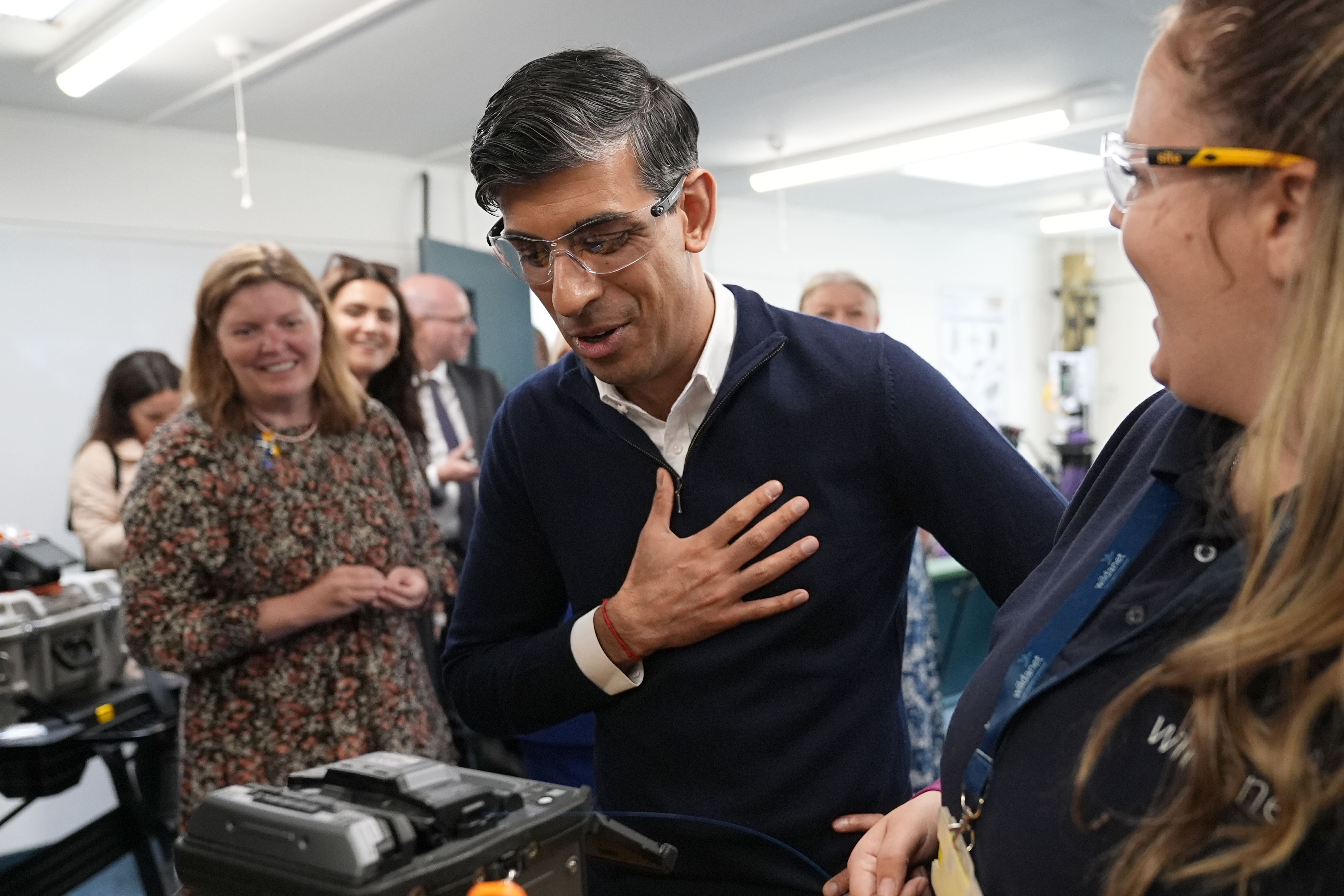Seats visited by party leaders on day seven: Key election data
The Prime Minister has spent Wednesday in a number of battleground seats in south-west England.

Rishi Sunak kicked off a day of campaigning in south-west England in one of his party’s most vulnerable seats in the region: St Ives.
The Cornwall constituency is number 16 on the Liberal Democrats’ target list, thanks to it needing a swing in the share of the vote of only 4.9 percentage points to change hands.
St Ives was once one of the most solid bricks in the Lib Dems’ “yellow wall” of constituencies across the South West, being held by the party from 1997 to 2015.
The Tories gained it in 2015 and have held it ever since, but are defending a notional majority at this election of just 5,227: small enough to mean the seat is at risk from a Lib Dem revival, particularly as Labour – who won just 9% of the vote in 2019 – are not in contention here.
The Prime Minister then moved up the coast to the constituency of Cornwall South East: another former Liberal Democrat stronghold but one that has been held by the Conservatives since 2010 and is not quite so electorally precarious (Lib Dem target 153) – though the swing needed for the Lib Dems to win, 21.4 points, is the kind the party has notched up in recent by-elections.
Next stop for Mr Sunak was Devon Central (Lib Dem target 121), a seat that has been held by the Tories since its creation in 2010 and which would need another large swing (20.2 points) to fall to the Liberal Democrats.
While the Prime Minister was busy trying to see off the threat of a Lib Dem revival across the South West, several hundred miles away the Liberal Democrat leader Sir Ed Davey was visiting another Tory-held seat that his party has in its sights: Brecon, Radnor & Cwm Tawe in Wales.
This is a brand new constituency, but is being treated as a Conservative defence at this election based on calculations that suggest the Tories would have won the seat in 2019 with a majority of 9,091.
Like St Ives, Brecon, Radnor & Cwm Tawe is high on the Lib Dems’ target list (number 25) and would also need a relatively small swing to change hands (8.7 points).
The seat that was formerly in this part of Wales, Brecon & Radnorshire, was held by the Liberal Democrats from 1997 to 2015 and again briefly in 2019.
Sir Ed later paid a visit to the Somerset constituency of Bath: one of the few seats his party managed to win at the 2019 election but which should be safe for the Lib Dems this time, with the Tories needing to overturn a majority of more than 12,000 to cause an upset.
The road to a Labour government “runs through right here in Worcester”, Sir Keir Starmer told his supporters on Wednesday, highlighting just how important the seat and others like it will be to his party’s chances of election victory.
Tory-held Worcester is 70th on Sir Keir’s target list and needs a swing of 6.7 points to change hands, making it the kind of constituency Labour needs to win to have a chance – at the very least – of ending up the largest party after polling day.
It has also become one of the UK’s “bellwether” seats, where the local result tends to match the national result.
Since 1979, whichever party has won Worcester has also gone on to form the government.
Perhaps acknowledging this significance, Sir Keir made not one but two campaign appearances in the town on Wednesday, at the Three Counties medical school and at Worcester City football club.
Bookmark popover
Removed from bookmarks